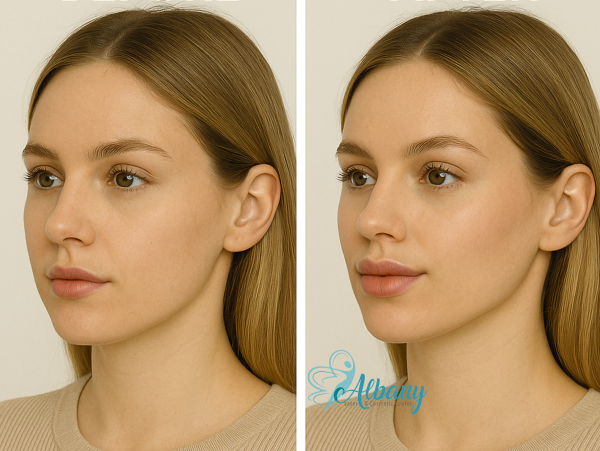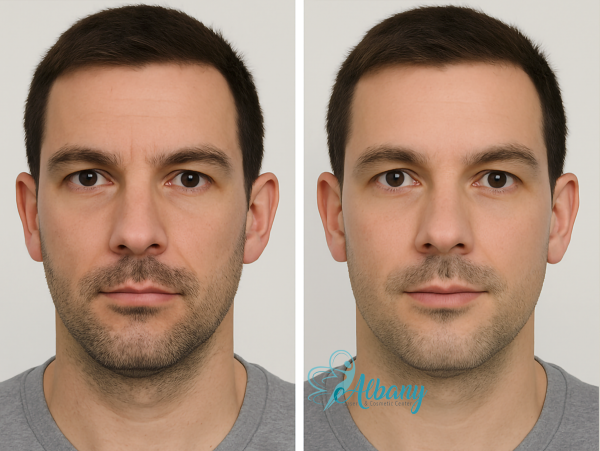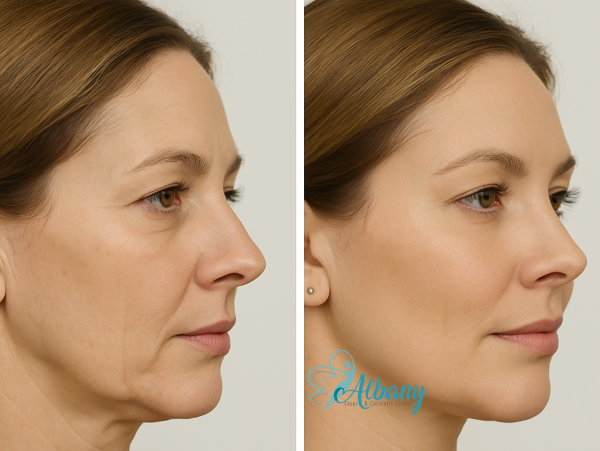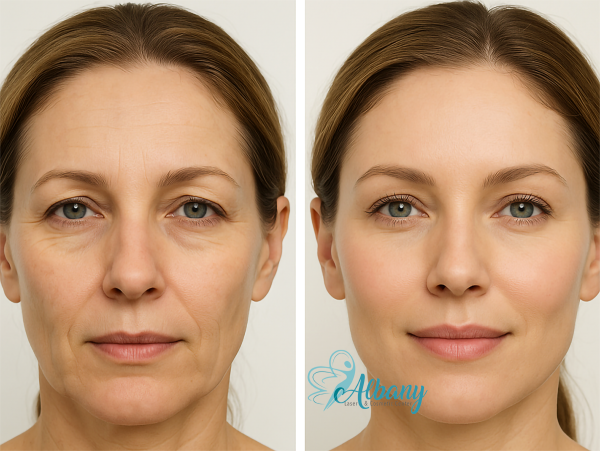Best Fillers in Edmonton: Achieve Natural, Youthful Results
Fillers Edmonton is a popular search for individuals seeking non-surgical facial enhancements. Dermal fillers effectively restore lost volume, smooth wrinkles, and enhance facial contours, giving a refreshed and youthful appearance. These treatments use hyaluronic acid-based injectables such as Juvéderm and Restylane to achieve natural-looking results.
At Albany Cosmetic and Laser Centre in Edmonton, we specialize in advanced filler treatments tailored to each patient’s unique facial structure and beauty goals. Whether you want to plump lips, contour cheekbones, or soften fine lines, our expert team ensures safe, high-quality results.
Filler Injection Summary
Injection Cost
Procedure Duration
Results Longevity
Level of Discomfort
What Are Fillers and How do they work
Dermal fillers are injectable gel-like substances used to restore lost volume, smooth wrinkles, and enhance facial contours. They are primarily made of hyaluronic acid, a naturally occurring substance in the skin that helps retain moisture and provide a plump, youthful appearance. Other types, such as Radiesse, Bellafill and Sculptra, stimulate collagen production for longer-lasting results.
Common treatment areas include the cheeks, lips, jawline, and under-eye hollows, offering a non-surgical way to rejuvenate the face with minimal downtime. The procedure is quick, typically taking 30 to 45 minutes, and results can last anywhere from six months to two years, depending on the type of filler used.
Types of Dermal Fillers and How to Choose the Best One
Filler Injections come in different formulations, each designed for specific cosmetic goals.
- Juvederm and other Hyaluronic acid fillers add hydration and volume to areas such as the lips and fine lines.
- Radiesse is made of calcium hydroxylapatite-based fillers is excellent for deeper wrinkles and facial contouring, offer a longer-lasting, firmer effect.
- Sculptra, made from poly-L-lactic acid, gradually stimulates collagen production for subtle, long-term enhancement.
- Bellafill, a collagen-based filler, provides immediate and lasting results by strengthening the skin’s structure.
The best filler depends on your individual needs, and a professional consultation ensures a personalized approach for balanced, natural-looking results.
Fillers Edmonton Results: before and after Pictures




Dermal fillers provide an immediate enhancement, with full results visible within 1-2 weeks. The treatment is perfect for addressing:
- Volume loss in the cheeks and under-eye area
- Enhancing lip shape and fullness
- Smoothing fine lines and deep wrinkles
- Jawline and chin contouring
Results typically last between 6 to 24 months, depending on the filler type and area treated.
How to prepare for fillers injection and aftercare Tip
3 to 7 Days Before – Preparation
- Avoid blood thinners (aspirin, ibuprofen) to minimize bruising.
- Drink plenty of water and maintain a good skincare routine.
Treatment Day – What to Expect
- Numbing cream is applied for comfort.
- The procedure takes about 30-45 minutes.
- Results are visible immediately, with full effects appearing within two weeks.
1 to 7 Days After – Immediate Aftercare
- Mild swelling or bruising may occur.
- Avoid alcohol, direct sunlight, and intense physical activity.
1 to 7 Days After – Immediate Aftercare
- Mild swelling, redness, or bruising may occur but should subside within a few days.
- Avoid alcohol, direct sunlight, and intense physical activity to prevent irritation.
- Apply a cold compress if needed to reduce swelling.
- Refrain from touching or massaging the treated area unless instructed. For more tips, please visit our after-care page!
7 to 14 Days – Ongoing Aftercare
- Any residual swelling or bruising should be nearly gone.
- Final results become more noticeable as the filler settles.
- Hydrate well and follow a consistent skincare routine to enhance longevity.
- If needed, schedule a follow-up appointment to assess results.